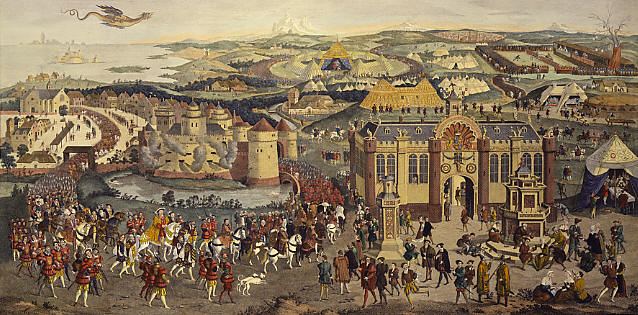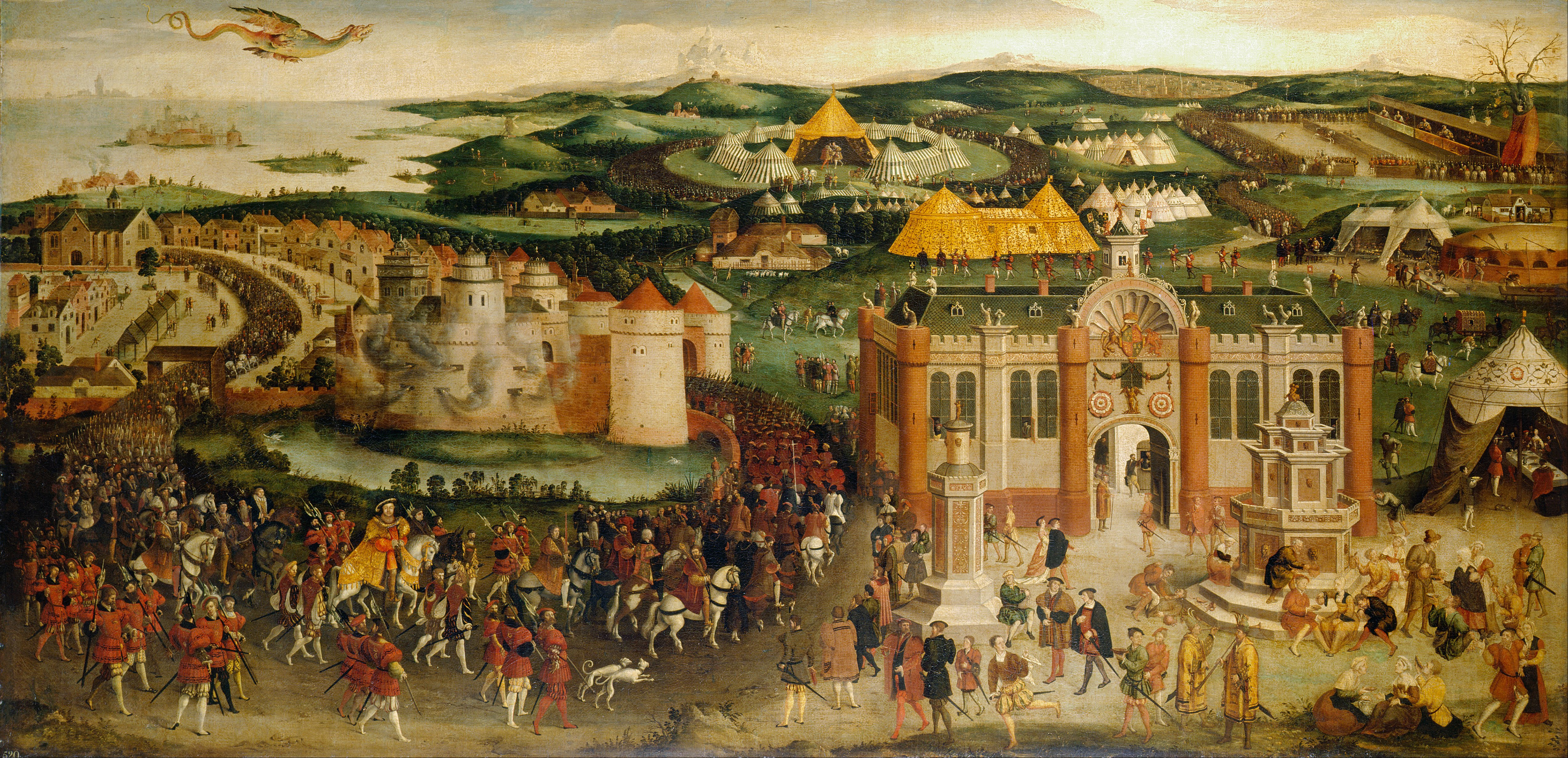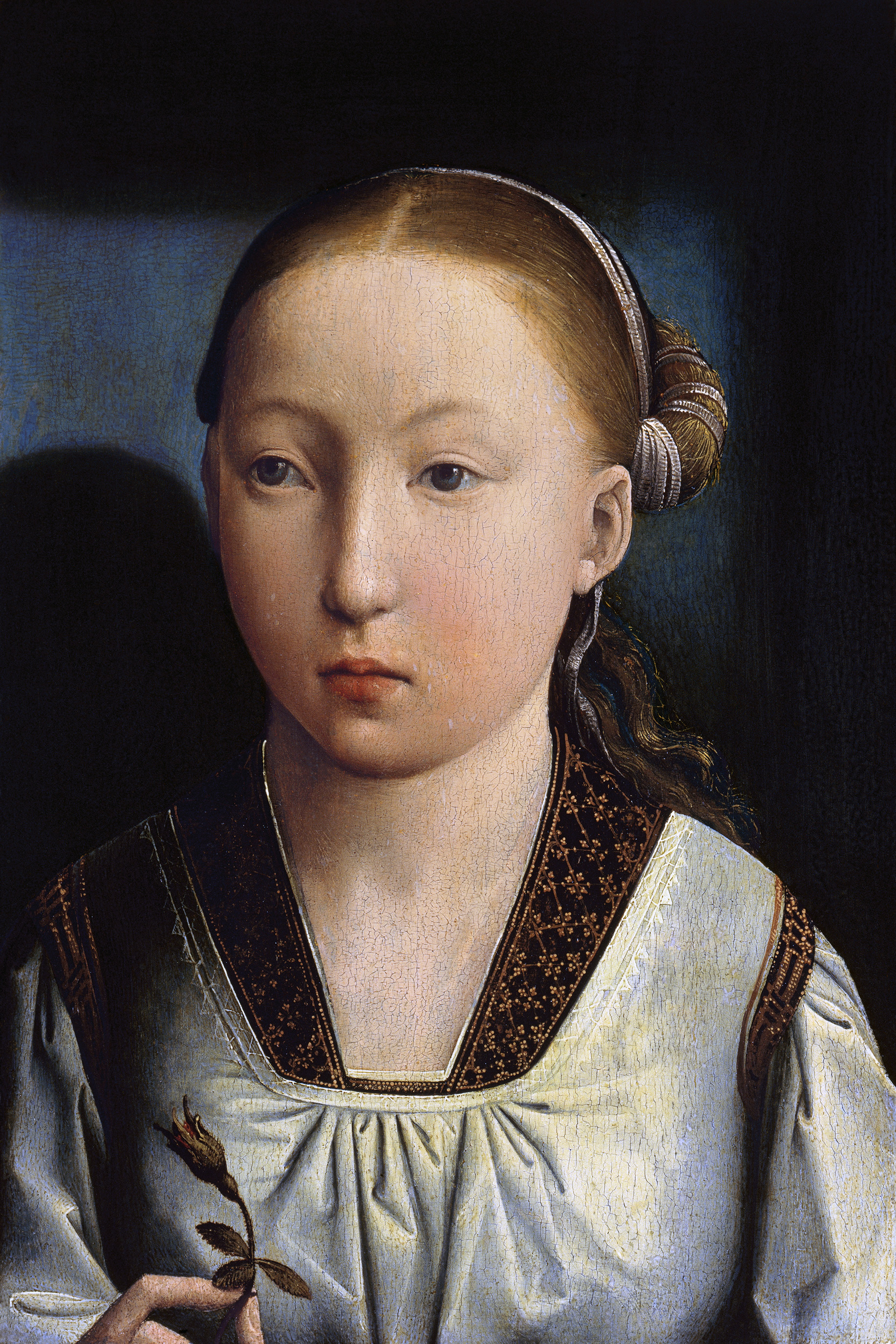|
Robert Radcliffe, 1st Earl Of Sussex
Robert Radcliffe, 10th Baron Fitzwalter, 1st Earl of Sussex, KG, KB, PC (c. 148327 November 1542), also spelt Radclyffe, Ratcliffe, Ratcliff, etc., was a prominent courtier and soldier during the reigns of Henry VII and Henry VIII, who served as Chamberlain of the Exchequer and Lord Great Chamberlain. Family Robert Radcliffe, born about 1483, was the only son of John Radcliffe (1452–1496), 9th Baron FitzWalter, and Margaret Whetehill, widow of Thomas Walden, gentleman, and daughter of Robert Whetehill, esquire, by his wife, Joan. Radcliffe had five sisters, Mary, the wife of Sir Edward Darrell; Bridget; Ursula; Jane, a nun; and Anne, wife of Sir Walter Hobart. Career In October 1495 Robert Radcliffe's father was attainted of high treason for confederacy with the pretender, Perkin Warbeck, by which all his honours were forfeited. His life was spared, and he was imprisoned at Guisnes. After he unsuccessfully attempted to escape, he was beheaded at Calais about 24 Novembe ... [...More Info...] [...Related Items...] OR: [Wikipedia] [Google] [Baidu] |
Order Of The Bath
The Most Honourable Order of the Bath is a British order of chivalry founded by King George I of Great Britain, George I on 18 May 1725. Recipients of the Order are usually senior British Armed Forces, military officers or senior Civil Service (United Kingdom), civil servants, and the monarch awards it on the advice of His Majesty's Government. The name derives from an elaborate medieval ceremony for preparing a candidate to receive his knighthood, of which ritual bathing (as a symbol of Ritual purification, purification) was an element. While not all knights went through such an elaborate ceremony, knights so created were known as "knights of the Bath". George I constituted the Knights of the Bath as a regular Order (honour), military order. He did not revive the order, which did not previously exist, in the sense of a body of knights governed by a set of statutes and whose numbers were replenished when vacancies occurred. The Order consists of the Sovereign of the United King ... [...More Info...] [...Related Items...] OR: [Wikipedia] [Google] [Baidu] |
Edward Darrell (died 1530)
Sir Edward Darrell (1465/66 – 1530), of Littlecote, Wiltshire, was an English politician. He is chiefly remembered as the father of Elizabeth Darrell, who was a maid of honour to Queen Katherine of Aragon. Elizabeth had a notorious affair with the poet Sir Thomas Wyatt, by whom she had several children, and was later rumoured to have planned to become the sixth Queen of Henry VIII. He was the only son of Sir George Darrell of Littlecote (died 1474), Keeper of the Great Wardrobe to King Edward IV, and his second wife Joan Haute, daughter of William Haute. His father died when Edward was eight years old, and he succeeded to very substantial estates, the bulk of which were in Wiltshire: Littlecote House was the principal family residence. He had at least one half-sister Elizabeth, who married John Seymour: they were the grandparents of Queen Jane Seymour. Despite his Yorkist background, his loyalty to the Tudor dynasty was never seriously in doubt, and he prospered as a re ... [...More Info...] [...Related Items...] OR: [Wikipedia] [Google] [Baidu] |
Field Of The Cloth Of Gold
The Field of the Cloth of Gold (, ) was a summit meeting between King Henry VIII of England and King Francis I of France from 7 to 24 June 1520. Held at Balinghem, between Ardres in France and Guînes in the English Pale of Calais, it was an opulent display of wealth by both kings. The summit was arranged to increase the bond of friendship between the two kings following the Anglo-French treaty of 1514. The two monarchs would meet again in 1532 to arrange Francis's assistance in pressuring Pope Clement VII to pronounce Henry's first marriage as illegitimate. Under the guidance of English Cardinal Thomas Wolsey, these European states sought to outlaw war forever among Christian peoples. The Pale of Calais, home to the meeting in Balinghem, was the final English possession in France. This territorial leftover from the Hundred Years' War caused some tensions between the English and French, as the latter preferred a location closer to the border, but topographical considerati ... [...More Info...] [...Related Items...] OR: [Wikipedia] [Google] [Baidu] |
Tournai
Tournai ( , ; ; ; , sometimes Anglicisation (linguistics), anglicised in older sources as "Tournay") is a city and Municipalities in Belgium, municipality of Wallonia located in the Hainaut Province, Province of Hainaut, Belgium. It lies by road southwest of the centre of Brussels on the river Scheldt, and is part of Eurometropolis Lille–Kortrijk–Tournai, In 2022, the municipality of Tournai had an estimated population of 68,518 people. Tournai is one of the oldest cities in Belgium and has played an important role in the country's cultural history. It was the first capital of the Francia, Frankish Empire, with Clovis I being born here. Geography Tournai lies by road southwest of the centre of Brussels on the river Scheldt. Administratively, the town and municipality is part of the Hainaut Province, Province of Hainaut, in the Wallonia region of southwest Belgium. The municipality has an area of . Tournai has its own Arrondissements of Belgium, arrondissements, both ad ... [...More Info...] [...Related Items...] OR: [Wikipedia] [Google] [Baidu] |
George Talbot, 4th Earl Of Shrewsbury
George Talbot, 4th Earl of Shrewsbury, 4th Earl of Waterford, 10th Baron Talbot, Order of the Garter, KG, Order of the Bath, KB, Privy Counsellor, PC ( – 26 July 1538) was the son of John Talbot, 3rd Earl of Shrewsbury, and Lady Catherine Stafford, daughter of the Humphrey Stafford, 1st Duke of Buckingham, 1st Duke of Buckingham. He also held the Subsidiary title, subsidiary titles of 13th Baron Strange of Blackmere and 9th Baron Furnivall. Early life The Earl was born at Shifnal, Shropshire, in 1468. He succeeded to his father's peerage in 1473, when aged five years, and was appointed a Order of the Bath, Knight of the Bath in 1475. Career Under King Henry VII of England, Henry VII, the Earl was a distinguished and honoured warrior. He fought with distinction against Lambert Simnel at the Battle of Stoke and was created a Knight of the Garter after the battle. In 1489 he joined the English expedition to Flanders to aid the Holy Roman Emperor, Emperor against the French. The ... [...More Info...] [...Related Items...] OR: [Wikipedia] [Google] [Baidu] |
Vanguard (military Formation)
The vanguard (sometimes abbreviated to van and also called the advance guard) is the leading part of an advancing military formation. It has a number of functions, including seeking out the enemy and securing ground in advance of the main force. In naval warfare the van is the advance ship, or fleet, that will make the initial engagement with an enemy fleet. History The vanguard derives from the traditional division of a medieval army into three battles or ''wards''; the Van, the Main (or Middle), and the Rear. The term originated from the medieval French ''avant-garde'', i.e. "the advance guard". The vanguard would lead the line of march and would deploy first on the field of battle, either in front of the other wards or to the right if they deployed in line. The makeup of the vanguard of a 15th century Burgundian army is a typical example. This consisted of: *A contingent of foreriders, from whom a forward detachment of scouts was drawn; *The main body of the vanguard, ... [...More Info...] [...Related Items...] OR: [Wikipedia] [Google] [Baidu] |
Field Of The Cloth Of Gold
The Field of the Cloth of Gold (, ) was a summit meeting between King Henry VIII of England and King Francis I of France from 7 to 24 June 1520. Held at Balinghem, between Ardres in France and Guînes in the English Pale of Calais, it was an opulent display of wealth by both kings. The summit was arranged to increase the bond of friendship between the two kings following the Anglo-French treaty of 1514. The two monarchs would meet again in 1532 to arrange Francis's assistance in pressuring Pope Clement VII to pronounce Henry's first marriage as illegitimate. Under the guidance of English Cardinal Thomas Wolsey, these European states sought to outlaw war forever among Christian peoples. The Pale of Calais, home to the meeting in Balinghem, was the final English possession in France. This territorial leftover from the Hundred Years' War caused some tensions between the English and French, as the latter preferred a location closer to the border, but topographical considerati ... [...More Info...] [...Related Items...] OR: [Wikipedia] [Google] [Baidu] |
Thomas Wolsey
Thomas Wolsey ( ; – 29 November 1530) was an English statesman and Catholic cardinal (catholic), cardinal. When Henry VIII became King of England in 1509, Wolsey became the king's Lord High Almoner, almoner. Wolsey's affairs prospered and by 1514 he had become the controlling figure in virtually all matters of state. He also held important ecclesiastical appointments. These included the Archbishopric of York, Archbishop of York—the second most important role in the English church—and that of papal legate. His appointment as a Cardinal (Catholic Church), cardinal by Pope Leo X in 1515 gave him precedence over all other English clergy. The highest political position Wolsey attained was Lord Chancellor, the king's chief adviser (formally, as his successor and disciple Thomas Cromwell was not). In that position, he enjoyed great freedom and was often depicted as the ''alter rex'' ("other king"). After failing to negotiate an annulment of Henry's marriage to Catherine of Ara ... [...More Info...] [...Related Items...] OR: [Wikipedia] [Google] [Baidu] |
Westminster Abbey
Westminster Abbey, formally titled the Collegiate Church of Saint Peter at Westminster, is an Anglican church in the City of Westminster, London, England. Since 1066, it has been the location of the coronations of 40 English and British monarchs and a burial site for 18 English, Scottish, and British monarchs. At least 16 royal weddings have taken place at the abbey since 1100. Although the origins of the church are obscure, an abbey housing Benedictine monks was on the site by the mid-10th century. The church got its first large building from the 1040s, commissioned by King Edward the Confessor, who is buried inside. Construction of the present church began in 1245 on the orders of Henry III. The monastery was dissolved in 1559, and the church was made a royal peculiar – a Church of England church, accountable directly to the sovereign – by Elizabeth I. The abbey, the Palace of Westminster and St Margaret's Church became a UNESCO World Heritage Site in 1987 becaus ... [...More Info...] [...Related Items...] OR: [Wikipedia] [Google] [Baidu] |
Katherine Of Aragon
Catherine of Aragon (also spelt as Katherine, historical Spanish: , now: ; 16 December 1485 – 7 January 1536) was Queen of England as the first wife of King Henry VIII from their marriage on 11 June 1509 until its annulment on 23 May 1533. She was Princess of Wales while married to Henry's elder brother, Arthur, Prince of Wales, for a short period before his death. Catherine was born at the Archbishop's Palace of Alcalá de Henares, and was the youngest child of Isabella I of Castile and Ferdinand II of Aragon. She was three years old when she was betrothed to Arthur, the eldest son of Henry VII of England. They married in 1501, but Arthur died five months later. Catherine spent years in limbo, and during this time, she held the position of ambassador of the Aragonese crown to England in 1507, the first known female ambassador in European history. She married Henry VIII shortly after his accession in 1509. For six months in 1513, she served as regent of England wh ... [...More Info...] [...Related Items...] OR: [Wikipedia] [Google] [Baidu] |
Arthur, Prince Of Wales
Arthur, Prince of Wales (19/20 September 1486 – 2 April 1502), was the eldest son of King Henry VII of England and Elizabeth of York, and an older brother to the future King Henry VIII. He was Duke of Cornwall from birth, and he was created Prince of Wales and Earl of Chester in 1489. As the heir apparent of his father, Arthur was viewed by contemporaries as the great hope of the newly established House of Tudor. His mother was the daughter of the Yorkist king, Edward IV, and his birth cemented the union between the House of Lancaster and the House of York. Plans for Arthur's marriage began before his third birthday. At the age of eleven, he was formally betrothed to Catherine of Aragon, a daughter of the powerful Catholic Monarchs in Spain, in an effort to forge an Anglo-Spanish alliance against France and Scotland. Arthur was well educated and was in good health for the majority of his life. Soon after his marriage to Catherine in 1501, the couple took up residence at L ... [...More Info...] [...Related Items...] OR: [Wikipedia] [Google] [Baidu] |










